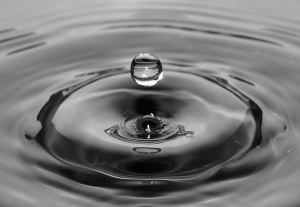 When my daughters used to come home to Lake Oswego from college in California, they would remark on two things—how great the air smelled and how delicious the water tasted.
When my daughters used to come home to Lake Oswego from college in California, they would remark on two things—how great the air smelled and how delicious the water tasted.
There are lots of things that go into tap water’s taste. Source is one—whether it’s surface water, like from rivers and streams, or groundwater, coming from wells. Then there are factors like the treatment, the type, age and condition of the treatment infrastructure, the distribution system, and the presence of naturally occurring minerals. I imagine how committed a city is to water quality also plays a role, which may help explain why one of the things my girls missed when left home was a good glass of water.
In honor of World Water Day, I wanted to point out some facts about the water in Lake Oswego Oregon.
1. The source of Lake Oswego’s water is the Clackamas River which receives runoff and snowmelt from a 940 square mile area on the western slopes of Ollalie Butte near Timothy Lake.
2. Water is withdrawn near Gladstone and pumped across the Willamette River to the city’s treatment plant in West Linn before being sent to the city’s distribution system complete with 15 storage reservoirs, 13 pump stations and 210 miles of water mains.
3. Despite how good my daughters think our water tastes, key facilities are in need of expansion and upgrades. With this in mind, the City of Lake Oswego endorsed a partnership agreement with the City of Tigard in 2008 to share the costs in expanding our water capacity and reinvesting in our water treatment facilities.
4. The City of Lake Oswego is serious about conserving this valuable resource and offers free water audits during the spring and summer months to help homeowners learn better ways to manager their water. The auditor looks at lawn watering system, water efficient appliances, conservation tools and leak detection. Citizens who have been through an audit and implemented the recommendations have seen as much as 20% savings in their water bill.
5. Homeowners can also take advantage of the city’s water conservation rebate program, receiving $75 while funding lasts for installing efficient water-conserving washing machines and between $75 to $125 for water efficient toilets.
6. The City of Lake Oswego makes it hard for homeowners to find excuses for not conserving. The Public Works Department also offers free tools/devices to help with conservation like leak detection dye tables for toilets, faucet aerators, high efficiency shower heads, shower timers, hose timers, soil moisture probes, and rain gages. Rain sensors are available for $5 and can prevent sprinkler systems from watering during or after rain.
7. The overall water usage of participants in the City’s water conservation program since 2008 (individual residents, apartments/condos and businesses) has dropped over 25% when usage of 2009-2014 is compared with patterns during 2003 to 2008.
So raise a glass of tap water and join me in making a toast to Lake Oswego’s water!
Another way to celebrate World Water Day is to register for Walk4Water8, a 2-mile walk beginning and ending at Foothills Park in Lake Oswego to simulate the trek Zambian villagers must take to get their water every day. This year’s walk is set for April 11, beginning at 9:00 a.m.
